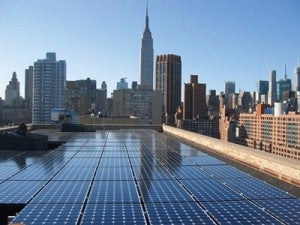By: Robert King, Southcentral Partnership for Energy Efficiency as a Resource, Peter Sopher and John Hall, Environmental Defense Fund
 Three of the top five fastest growing cities in the country are here in Texas, and explosive population growth puts a lot of pressure on our electric grid to keep up with demand. Fortunately, the state’s main grid operator, Electric Reliability Council of Texas (ERCOT), has done a great job of keeping the lights on, and new building codes are ensuring less energy use in the thousands of new houses that are being constructed.
Three of the top five fastest growing cities in the country are here in Texas, and explosive population growth puts a lot of pressure on our electric grid to keep up with demand. Fortunately, the state’s main grid operator, Electric Reliability Council of Texas (ERCOT), has done a great job of keeping the lights on, and new building codes are ensuring less energy use in the thousands of new houses that are being constructed.
As more and more people flock to the Lone Star State, there is significant potential for energy efficiency to reduce pollution and energy bills for Texas families. But in a report released last October, ERCOT overestimated the cost of energy efficiency in Texas – by more than two times – and understated by about seven times the amount we are on track to achieve. ERCOT’s estimates do not acknowledge Texas’ reality: Energy efficiency, and other sources of clean energy, are already on the rise. Read More










 If you have ever worked in the service industry and dealt with a difficult customer (or even seen one in action), you are likely inclined to recall the oft-used adage, “the customer is always right.” Clichéd as that phrase may be, it is not without merit. Here at Environmental Defense Fund (EDF), we believe the same truism applies to how utilities approach providing electricity.
If you have ever worked in the service industry and dealt with a difficult customer (or even seen one in action), you are likely inclined to recall the oft-used adage, “the customer is always right.” Clichéd as that phrase may be, it is not without merit. Here at Environmental Defense Fund (EDF), we believe the same truism applies to how utilities approach providing electricity. You have to give some credit to FirstEnergy. It does hire creative lawyers.
You have to give some credit to FirstEnergy. It does hire creative lawyers. Year two of the California legislative cycle usually yields some bold policy ideas – and this year it looks like rethinking California’s relationship with methane and natural gas is on track to do just that.
Year two of the California legislative cycle usually yields some bold policy ideas – and this year it looks like rethinking California’s relationship with methane and natural gas is on track to do just that. When it comes to clean air and clean energy, Texas cities – and their encompassing counties – know what’s good for them.
When it comes to clean air and clean energy, Texas cities – and their encompassing counties – know what’s good for them. New York is preparing for a
New York is preparing for a